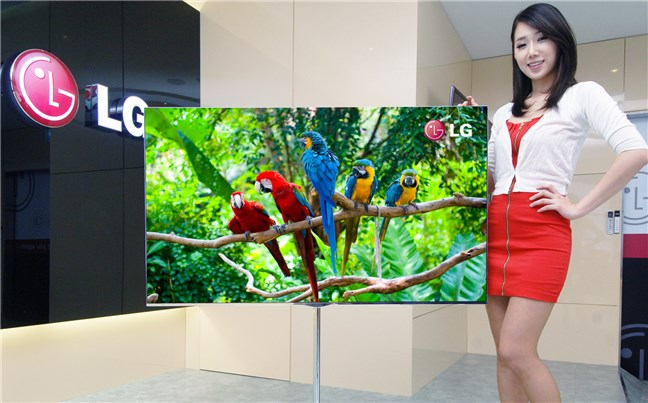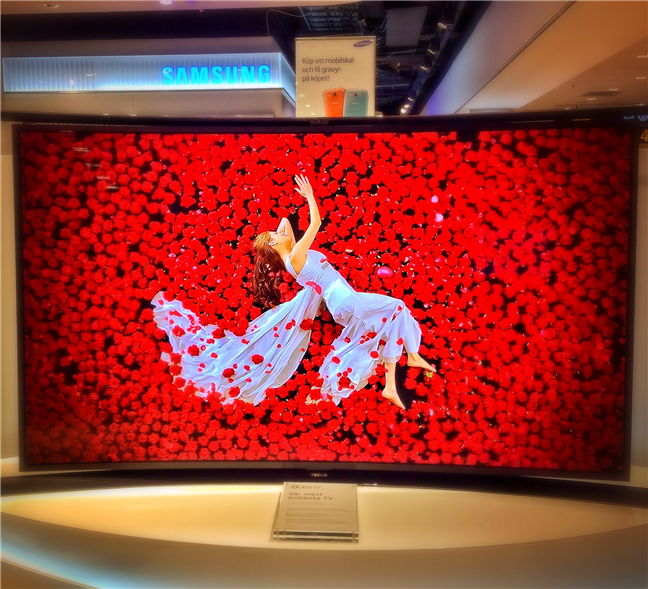
We bet that you have heard about OLED TVs. Every tech retailer sells them nowadays. Maybe you have even been interested in OLED computer monitors. But, do you know what OLED means, why it is good and why it is bad? Do you want to know whether or not you should invest your money in an OLED screen? If you do, read on, and you are going to find your answers:
What is OLED?
OLED is an acronym for Organic Light Emitting Diode, and it represents a type of technology that is used for displays. OLED displays have a layer made of organic material (carbon plus other substances) sandwiched between two electrodes which, when given electrical power, emits light.
What are the benefits of OLED?
The pixels on OLED displays are lit independently as each of them can receive electrical current independently. That means that OLED displays do not require additional backlight the way traditional LCD displays do. One important consequence is that OLED displays are thinner and lighter than LCD screens.
Another benefit of OLED is its image quality. OLED displays can light each of their pixels independently, and they can also turn off each of them independently. When no electrical current goes through a pixel, it is effectively off, which means that it is as close to absolute black as possible. That gives the OLED displays an edge over traditional LCD screens which always have the backlight on, and thus are never able to obtain "true blacks" on the images they display. Another essential aspect of OLED displays is that they can offer an extremely high contrast ratio. We already know that OLED can display absolute blacks, but it can also color each pixel using the exact brightness levels needed, as all it takes is more electric current sent to that specific pixel.
What is the difference between OLED and LED?
OLED is the same as LED but with additional organic material added. The LED comes from Light-Emitting Diode and represents a two-lead semiconductor light source.
What is the difference between OLED and LCD?
OLED displays use independently lit pixels, while LCD screens use a backlight to display images. In an OLED display, each pixel has its own "backlight" if you want, which sends its own light into the world. In an LCD screen, there is a backlight source for the entire screen, that is usually offered by a lamp, and that light goes through the pixels found in the display. On an LCD screen, pixels do not throw their own light, but rather block the backlight (from the lamp) from getting out. Regardless of how well it is made, no LCD screen can completely block the backlight it receives, which means that no LCD screen can offer the same "true black" as an OLED screen can.
What are the downsides of OLED?
The main downside of OLED screens is that they are not usually capable of offering the same high level of brightness as LCD screens can. However, if you take into consideration the much better contrast ratio, OLED screens are close to offering the same if not a better experience.
OLED displays also have the negative aspect of being shorter lived than their LCD counterparts. Unfortunately, the organic material used in OLED displays tends to degrade over time, resulting in color loss, especially the loss of the color blue. However, top OLED manufacturers such as LG have been working hard on a fix to prolong the lifespan of their screens. The current expected lifetime of an OLED TV, for example, can go from as little as 10 years and as far as 20 years or more on average daily use of about 6 or 7 hours a day.
Finally, another important reason to OLED not being everywhere yet is the fact that manufacturing OLED screens cost more than manufacturing LCD screens. Moreover, that also means that OLED screens are not what you would call affordable, although their prices have constantly gone down in the last couple of years.
Do you want an OLED TV or monitor?
Now you know what OLED stands for, which are its best assets and what are the differences between OLED and LCD. Do you yearn for an OLED TV? Or maybe a computer monitor? Are you ready to pay a premium the price for it? Share your thoughts in the comments section below.


 30.12.2018
30.12.2018 



